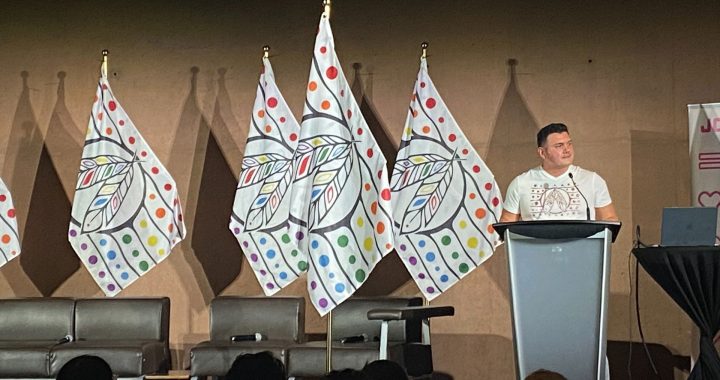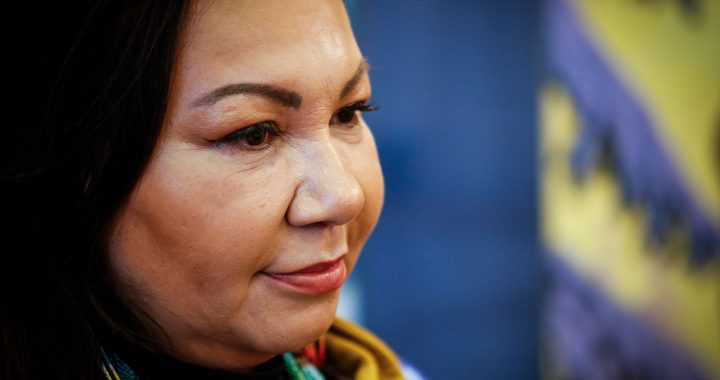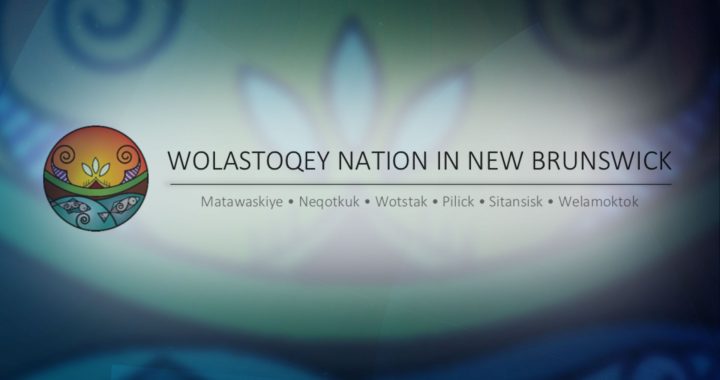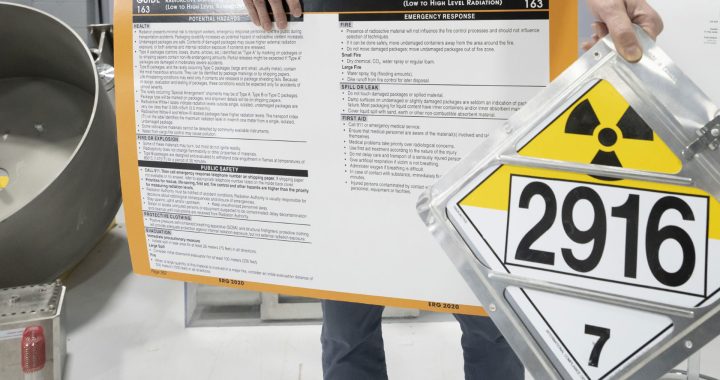
A missing persons poster in downtown Winnipeg seeks information about Buffalo Woman. Photo: APTN file
When police arrested serial killer George Sutherland of Attawapiskat First Nation it showed what investigative genetic genealogy can do.
In less than a year, he pleaded guilty to two Toronto murders and resolved a nearly 40-year-old cold case.
Toronto detectives linked his crimes using DNA technology in 2000 that showed the same man killed Erin Gilmour and Susan Tice in 1983. Then, with the help of online ancestry websites, investigative genetic genealogy pointed investigators to a Cree suspect from the James Bay coast in northern Ontario.
“These cases that have been cold for 30, 40, 50 years are now being solved in immediate succession,” said criminologist Michael Arntfield, a professor specializing in criminal humanities at Western University in London, Ont.
“There’s about a cold case murder solved a week in the U.S. (and) two unidentified bodies identified a week in the U.S. And, in Canada, we’re clearing out – at least in Ontario – a number of these older cold cases.
Read more:
Serial killers hunting large swaths of Canada: criminologist
Arntfield, a former police officer and author of several books, is amazed at the speed at which DNA is rounding up suspects.
“You get a dump of adrenaline, right?” he said in an interview Tuesday. “This is what you’re in this to do – is to bring closure, solve cases, decipher mysteries…
“I’ve postulated that (we can be) retiring the term cold case in the next generation.”
Ontario Provincial Police credited the powerful, new forensic science with helping them identify a suspect in a 50-year-old homicide last fall.
They arrested Remi Gregory Iahtail, 78, of Attawapiskat on Oct. 27, 2023 in connection to the rape and murder of Helen Carpenter.
Carpenter, who was 21, is among the legion of missing and murdered Indigenous people in Canada, whose cold cases remain unsolved.

Arntfield, who also leads the Cold Case Society which uses serial offender algorithm to track “clusters” — patterns of murders suspected to be linked – said something as simple as a family tree can now eliminate thousands of potential suspects and provide closure.
“You can get a 10th cousin, you can get an uncle,” he said. “The proximity of the relation will determine basically just how long it takes to find the person.”
“Toronto police got a $2.5-million grant to hire genealogists and to pay for all the lab work,” he added. “Every police service in Ontario can take advantage of it. They just send their case to Toronto; Toronto looks after the rest.”
Yet, in the Sutherland case, police needed a last bit of help from Jacquie Hookimaw-Witt, a citizen of Attawapiskat with in-depth knowledge of genealogy in the area.
“(Indigenous Peoples are) the most under-represented group in ancestry databanks,” said Arntfield. “The (Sutherland DNA) connection was 40 cousins away.
“So, it took two genealogists a year to go through the process of elimination, whereas (non-Indigenous peoples) who are buying these kits (are) getting caught very quickly because it will come back to an immediate relative.”

Winnipeg police credited DNA with helping them charge Jeremy Michael Anthony Skibicki with the murders of four Indigenous women in 2022.They confirmed the DNA of the victims in his apartment.
But Skibicki, who has pleaded not criminally responsible, claims he doesn’t know the identity of the first victim who police say died on or about March 15, 2022. She has since been given the honourary name Mashkode Bizhiki’ikwe (Buffalo Woman) by First Nations grandmothers.
A forensic DNA specialist located a speck of her DNA on the cuff of a designer jacket investigators retrieved after Skibicki said he sold it online following her murder. Police have no name, no missing persons report, no photo, no remains.
Arntfield says it’s a real mystery.
“Genetic genealogy may not even be able to help if they use it for all of the 16 (female DNA profiles Winnipeg police found in Skibicki’s home).
“You require a body or a record of a missing person to compare that (DNA) to. If this anonymous DNA sample from his apartment is 16 cousins away from somebody who’s in Ancestry(.com), but that doesn’t tell me anything because there’s no record of who that person is.
“If you have a body, you can say – at the very least – we’ll identify this person by doing interviews with family.”
Read more:
Tracing a First Nations family tree helps catch a killer
Winnipeg detectives did ask Skibicki to help create a sketch of Buffalo Woman, and recall any distinctive markings or tattoos, court documents show.
Arntfield said police are allowed to match DNA samples from their investigations of sexual assault, homicide and unidentified human remains on two American websites – GEDmatch and Family Tree DNA – in the hopes of finding a familial match.
But that can lead to a dead end in Indigenous communities where families have inter-married and everyone is somehow related. That’s where someone like Hookimaw-Witt comes in.
“Since I got involved in (Sutherland’s) case I see how advanced DNA can work together with Indigenous knowledge,” she said Wednesday.

Hookimaw-Witt encouraged Indigenous people to upload their DNA.
“I’m excited about it. I want to use the DNA kit,” she said, “I’m determined to find my missing relatives (who died as children at residential school and are buried in unmarked graves) and give them their proper ceremonial (burial).”
She suggested Indigenous leaders learn more about investigative genetic genealogy and make DNA kits available to their community members, with the condition the DNA evidence is only used to help identify missing people and unidentified remains.
“I’m hoping there could be more awareness and education about this technology,” said Hookimaw-Witt. “Toronto police have even offered to provide us with DNA kits.”









